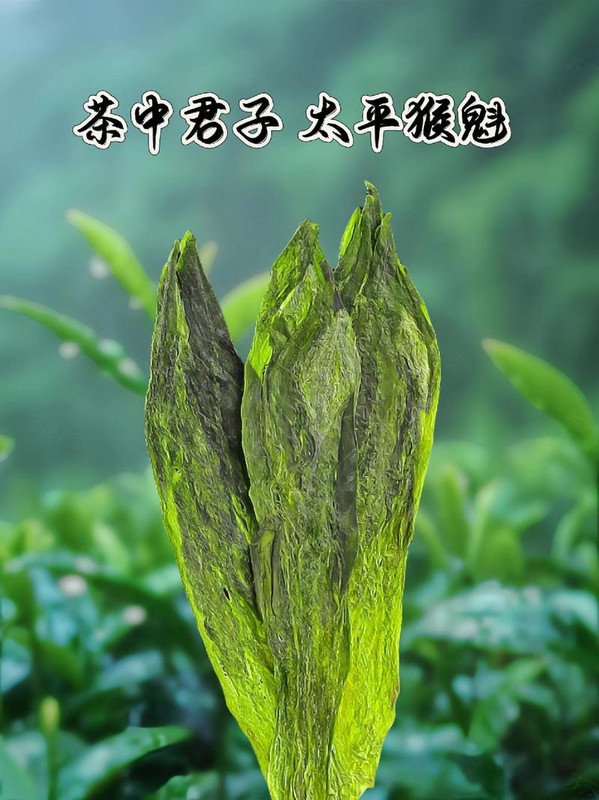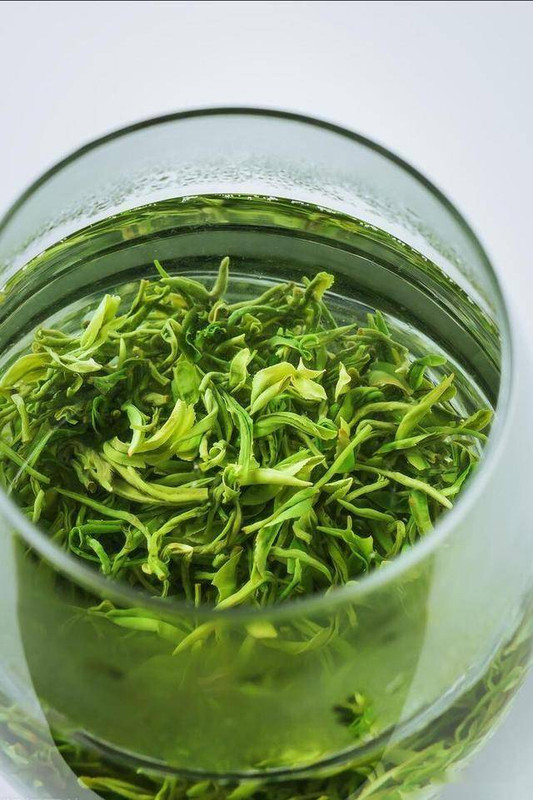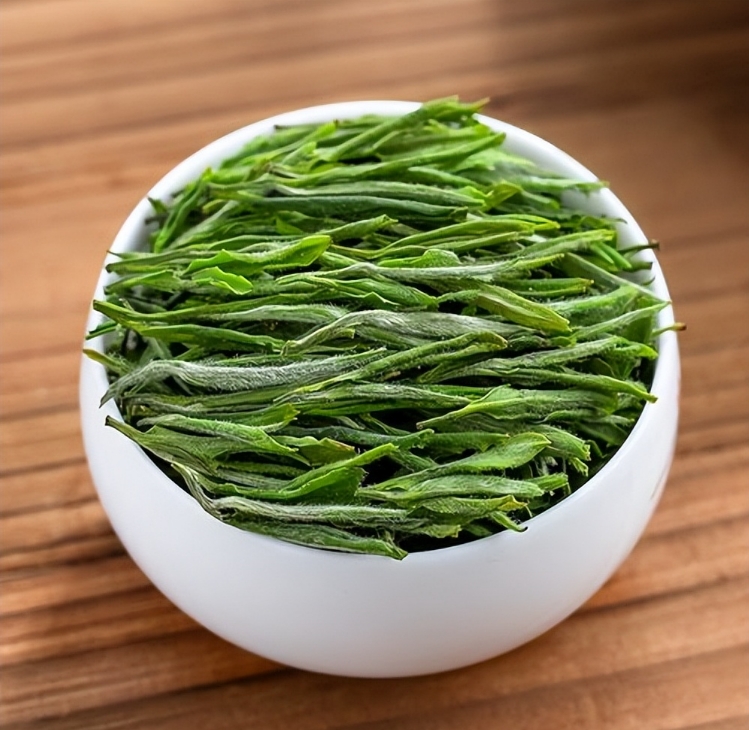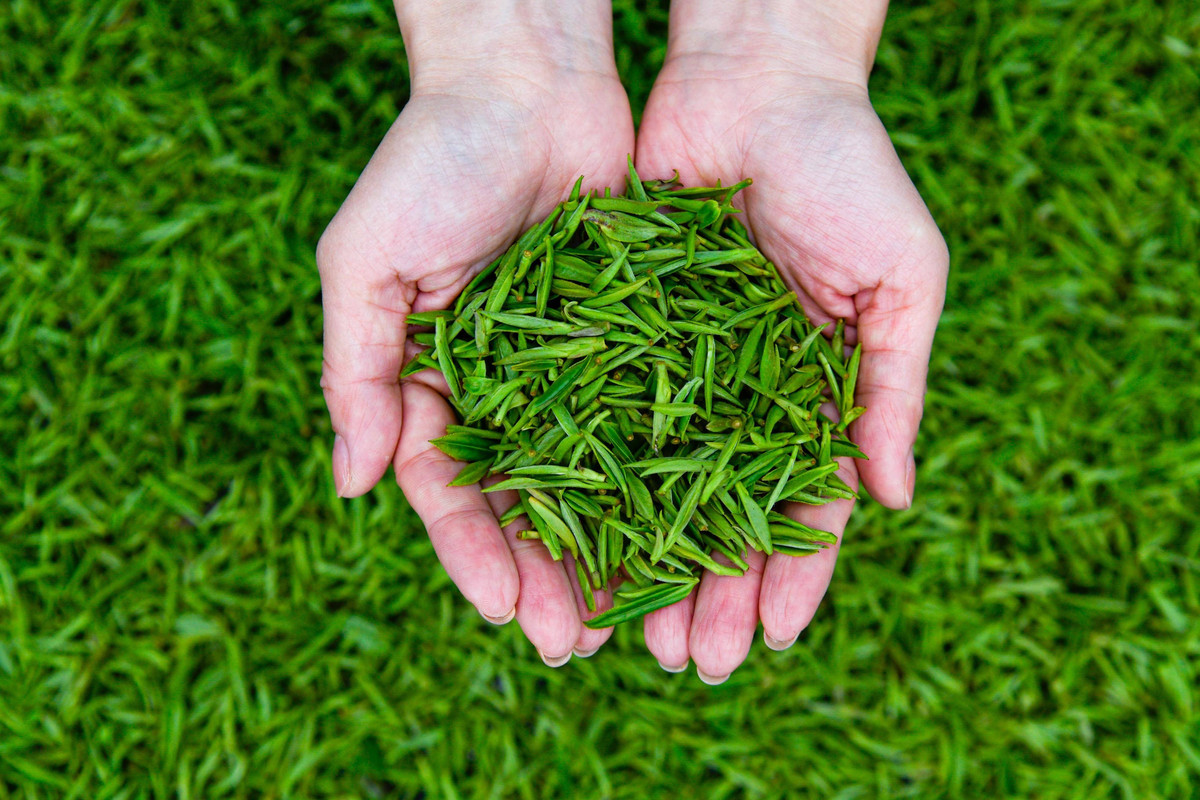1. Characteristics: A Study in Audacity

Taiping Houkui, or “Monkey King,” is green tea’s answer to avant-garde sculpture. Its defining trait? Two leaves embracing a bud, hand-flattened into a slender, blade-like shape that can stretch over 7 cm—a visual spectacle dubbed “two knives hugging a spear.” The leaves, dark jade with speckled white down, unfurl vertically during brewing, resembling orchids in bloom. The liquor? A luminous emerald, exuding aroma notes of lantern fruit (a tropical gourd), chestnut, and fresh bamboo. The taste is a paradox: vegetal yet brothy, with a lingering sweetness akin to steamed corn and a subtle astringency that cleanses the palate.
2. History: From Mountain Lore to State Banquets
The tea’s origin myth is steeped in Huangshan folklore. Legend claims it was discovered by a 19th-century tea farmer, Wang Kuocheng, who noticed monkeys plucking leaves from wild bushes near Sikao Village. The “monkey-picked” tale, while likely apocryphal, underscores its wild heritage. Its rise to fame began in 1915 when it won a gold medal at the Panama-Pacific International Exposition, later becoming Mao Zedong’s tea of choice for state gifts. Today, it graces the tables of global diplomacy, a symbol of Chinese craftsmanship.
3. Origin: The Enchanted Valley of Anhui
Houkui’s spiritual home lies in the Huangshan District of Anhui Province, specifically:
- Xinming Township: The epicenter, where tea gardens cling to slopes at 400–700 meters, shrouded in mist 200+ days annually.
- Sikao Village: Famed for its “cloud-tea” microclimate, with bushes rooted in shale-rich soils.
- Sankou Town: A newer production hub blending tradition with organic farming.
The valley’s ecosystem—dense bamboo forests, mineral-rich streams, and dramatic diurnal temperature shifts—imparts a unique “mountain flavor” (shanwei) to the tea.
4. Production Process: The Art of Restraint
a. Plucking (谷雨前后):
Harvested post-Guyu (Grain Rain) in late April, when leaves reach optimal maturity. Only the third bud-set is chosen, ensuring a balance of tenderness and flavor.
b. Withering (摊青):
Leaves are spread on bamboo mats for 6–8 hours, reducing moisture to 70% and softening cell walls.
c. Fixation (杀青):
A two-step process:
- Initial Roast (生锅): Leaves are tossed in woks at 120°C for 2–3 minutes, halting oxidation.
- Second Roast (熟锅): Temperature drops to 80°C, with artisans hand-pressing leaves into their signature flat shape—a technique requiring decades to master.
d. Shaping (理条):
Leaves are arranged in bamboo trays and pressed under wooden boards to straighten and flatten, a process taking 4–6 hours.
e. Drying (烘焙):
A three-tiered wood-fired oven system slowly reduces moisture to 3–4%, locking in aroma and creating a glossy finish.
5. Brewing Method: The Ritual of Majesty
- Water Quality: Use soft water (TDS < 150ppm) to avoid masking delicate flavors.
- Temperature: 85°C (185°F) to coax out complexity without bitterness.
- Tea-to-Water Ratio: 4g tea per 200ml water (adjust for preference).
- Infusion Time:
- 1st infusion: 2 minutes (unveils lantern fruit and chestnut notes).
- 2nd–3rd infusions: 3–4 minutes (develops brothy umami).
- Vessel: Tall glass tumblers or porcelain gaiwans best showcase the leaves’ vertical dance.
6. Authentication: Decoding Genuine Houkui
- Visual Cues: Genuine Houkui has a “spear-like” shape with visible white down. Counterfeits are often irregular or overly curled.
- Aroma: Authentic leaves emit a fresh, lantern fruit-like fragrance; artificial scents in low-grade teas smell cloying.
- Liquor: Premium grades yield a clear, emerald-green brew; inferior teas produce a murky, yellow-tinged liquid.
- Taste: Genuine Houkui has a lingering sweetness (“hui gan”) that coats the throat; fakes leave a flat, astringent finish.
7. Grading Standards & Pricing
Houkui is graded by leaf size, color, and aroma:
- Supreme Grade (国礼级): Uniform spears over 7 cm with abundant down. Price: 80–150/50g.
- Grade I (特级): Spears 5–7 cm with minimal breaks. Price: 50–100/50g.
- Grade II–III (一级–三级): Shorter spears with visible stems. Price: 20–60/50g.
Price Drivers:
- Altitude: Tea from 600m+ gardens commands a premium.
- Harvest Time: Pre-Guyu (谷雨前) teas fetch 2x post-Guyu prices.
- Certification: Organic or GI (Geographical Indication) tags increase value.
8. Health Benefits: A Brew for Longevity
- Antioxidant Powerhouse: Rich in EGCG, linked to reduced inflammation and cancer prevention.
- Metabolic Boost: Caffeine and L-theanine synergize to enhance focus without jitters.
- Digestive Aid: Traditionally used to alleviate bloating and improve fat metabolism.
- Oral Health: Polyphenols inhibit bacteria linked to cavities and gum disease.
Epilogue: The Tea That Redefines Green
Taiping Houkui is not merely consumed—it is experienced. From the hands of Huangshan artisans to the teacups of global connoisseurs, it embodies the philosophy of “less is more.” In a world obsessed with homogeneity, Houkui’s audacious shape and layered flavors remind us that true luxury lies in embracing imperfection. As climate change and market pressures test its future, the legacy of the Monkey King endures—a testament to the resilience of craft and the timeless allure of a cup steeped in mountain magic.



